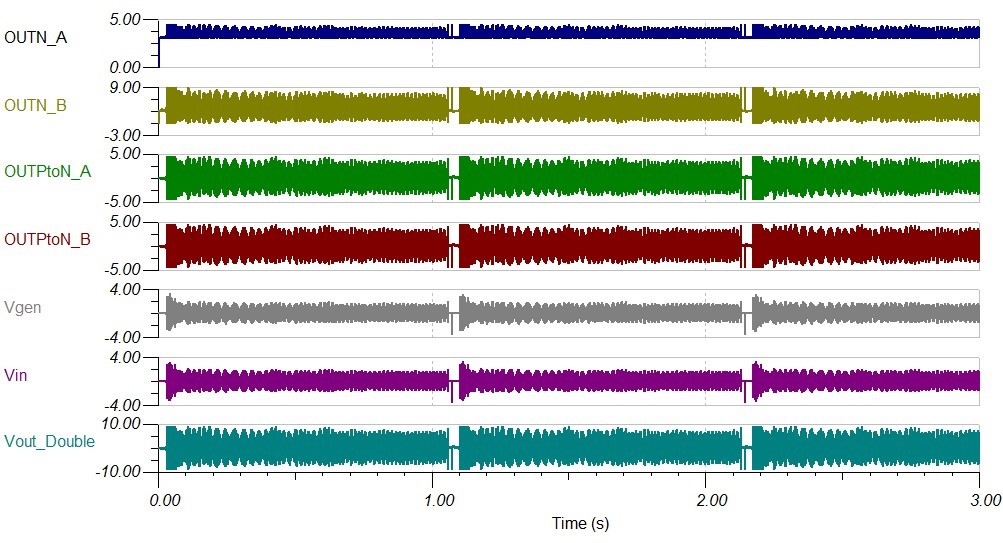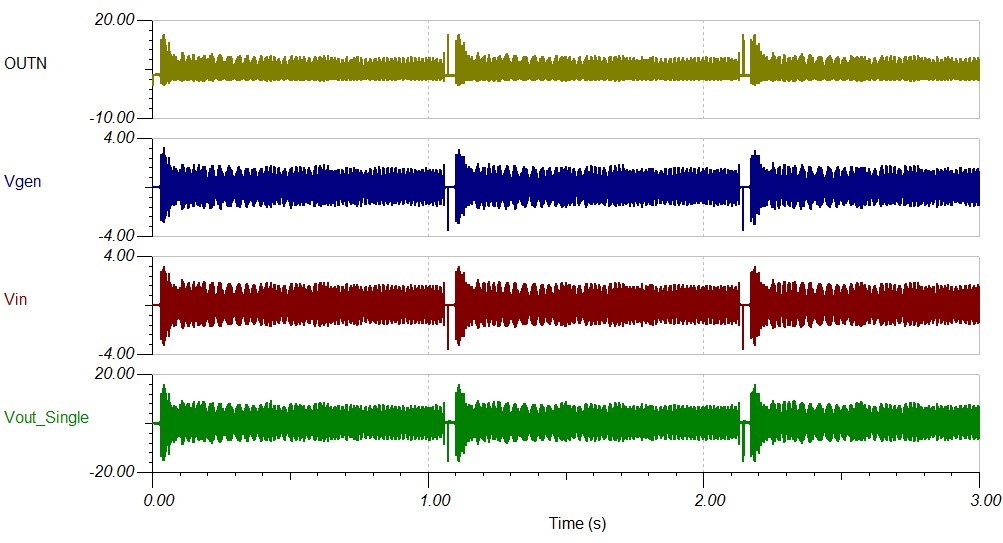I'm trying to drive a specific sound through a piezo speaker as loudly as possible, with limited space and BOM budget. Modelling in TINA-TI shows I would be able to drive the speaker with the LM58580 and this particular waveform at a maximum of 6.2 Vrms before sound quality starts degrading, but that's just half my target output, and the higher-output DRV2700 all-in-one piezo driver would be prohibitively expensive. The LM48580 already contains two single-ended amps in a bridge-tied load configuration to double its voltage range from 15 Vpp to 30 Vpp.
My question is: would it be possible to run two LM48580s - or any two bridge-tied load amplifiers - side by side with identical inputs and to tie OutN on Amplifier A to OutP on Amplifier B, and connect the load (a capacitive piezo speaker) between OutP on Amp A and OutN on Amp B? If the amplifier output pairs are floating with respect to ground, they would act like two voltage generators in series and the signal across the speaker could be as high as 60 Vpp. This isn't the case when I simulate it in TINA-TI: the new voltage across the speaker is the same as in the single amp configuration, and the voltage across each amplifier output pair is just halved.
What's going on, and why is the output limited like this? I'm a mechanical engineer so I'm not that well-versed on the limitations of silicon. Are the output rails not free-floating as I'm expecting them to be (maybe constrained between 0 and 30 V relative to ground)? Is what I'm attempting to do with two small bridge-tied load amplifiers impossible, and should I just build my circuit from discrete ampliiers and boost converters rather than limiting my search to monolithic piezo drivers?
Edited to add pics:
Double operation:
Single operation:



